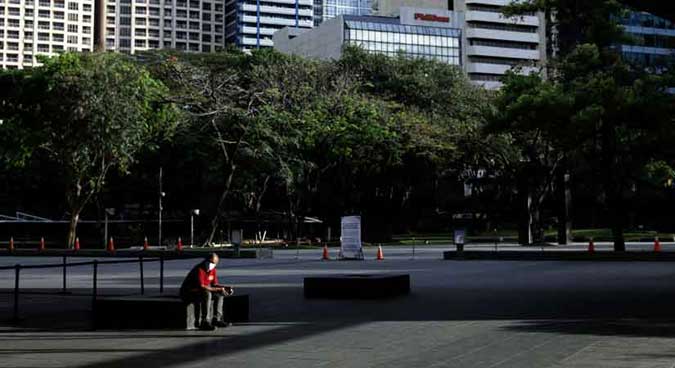S&P Global Ratings said weak economic activity and a prolonged lockdown are adding to the risks for Philippine banks
In a statement late Thursday, S&P Global credit analyst Nikita Anand said the firm expects Philippine loan portfolios to grow 3-5% this year when credit demand picks up in the second half.
S&P Global put Philippine banks in the group five category of its Banking Industry Country Risk Assessment (BICRA), along with those of other economies such as Bermuda, Italy, Malta, Panama, Peru, Hungary, Qatar, Iceland, Mexico, and the United Arab Emirates.
It said this is generally the tier for “BBB-” rated countries, the starting point for assigning an issuer credit rating for banks in that particular country.
The outlook could further be downgraded with a slower economic recovery, a resurgence in coronavirus infections and a sluggish vaccination program.
The credit rater downgraded its gross domestic product (GDP) forecast for the Philippines this year to 6% from 7.9% previously.
“The trend for economic risks faced by Philippine banks is negative, in our opinion,” it said.
“We forecast a sluggish revival in credit growth, rising non-performing loans (NPLs), a marginal decline in credit costs, and a mild recovery in profitability in 2021 as the Philippine economy recovers,” it added.
S&P Global said the sector’s NPLs could rise to 6% of total loans by year’s end from the 4.44% bad loan ratio at the end of 2020, as the pandemic’s impact on borrowers becomes more evident.
Credit costs will remain high this year at 1.7% of gross loans, but slightly lower than last year’s 2.1%.
Due to the sustained weakness in the labor market and prolonged lockdowns, banks should brace for a surge in bad loans from consumers and small businesses, it said.
Meanwhile, bigger companies have kept the quality of their credit strong so far but those in the services sector will likely struggle.
S&P Global said the solid capitalization of banks, with a Tier 1 capital ratio of around 16%, sound liquidity and sufficient loan loss provisioning could provide a buffer against these risks.
It said banks offloading their soured loans to asset management companies can provide relief as well.
Republic Act 11523 or the Financial Institutions Strategic Transfer (FIST) Law was signed in February, allowing banks to sell their non-performing assets to asset management companies. To encourage participation the law also provides tax breaks on the transfer of foreclosed assets associated with the loans.
“We view the industry risk trend as stable. We believe banks’ well-established domestic franchises will help them sustain a strong, stable, and diversified customer deposit profile. The banking sector’s institutional framework and competitive dynamics should stay stable over the next two years,” S&P said.
It said the sector could see a 1% return on assets this year, better than last year’s 0.8% return, as credit costs soften.
Bigger banks focused on enhancing their digital capacity will likely remain resilient against fresh competition from digital banks and financial technology companies, it said.
The Bankers Association of the Philippines (BAP) declined to comment when asked Friday. – Beatrice M. Laforga

